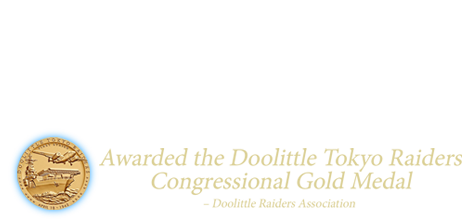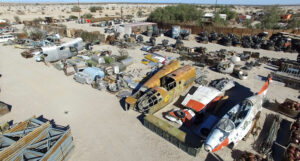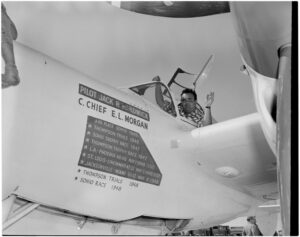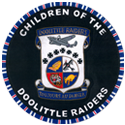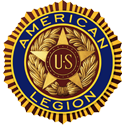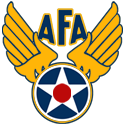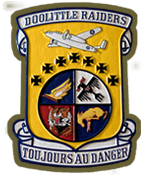NAA B-25B Ser#40-2347 – A National Treasure
Aero Trader Will Restore the Last Surviving B-25B
Over the course of the past 80 Years, it’s not really remarkable that only one B-25B out of 120 constructed survived WWII. Other much more numerous combat types were scrapped to oblivion. US Army Air Force B-25B Serial number 40-2347is bomber aircraft #118 – the third to the last B – and both it #40-2347 and Doolittle’s #40-2344 were delivered the same day, built by the same hands, the same shifts by both women and men alike, just three bombers apart, on 23rd December 1941. Can you imagine the feelings on the part of the North American workers as they rolled those bombers out the factory doors? It had been only 16 days since the Japanese sneak attack on Pearl Harbor. In a those two-weeks of time, life in American changed forever.
The Smithsonian National Air & Space Museum never acquired a B-25B since there were newer and better models available and getting down to the minutia of collecting important WWII aircraft had not completely – except for a few examples – entered into the Smithsonian lexicon although former curators had the foresight of saving some of our “Golden Age” aircraft before they were gone. After the War, General Hap Arnold said “save two of everything” for a proposed National Aviation Museum. He was listened to – for a bit. Some aircraft were set aside at various locations but with the start of the Korean War and with General Arnold fading from the scene, many were scrapped because the military needed “more room” and Hap Arnold was no longer around to champion their cause. The US Air Force Museum did not have a B-25B, nor could they find one. They realized the importance of the type.
In the 1950’s the USAF Museum (National Museum of the US Air Force / Wright-Patterson Air Force Base, Ohio) realized the importance of the type nor could they find one. As they began to look, a survey revealed there were simply not any surviving B models and so a mission began to somehow preserve a period B-25B model.
A Raider came to the rescue, once again. On December 30, 1957, Col. Jack Sims (Co-Pilot Crew 14) discovered that two months prior, a B-25 had flown to Davis-Monthan AFB for storage and eventual disposal. It just happened to be the oldest flying B-25 still in USAF inventory No. 43-3374 RB-25D. Although the D was the next production model, much of the hardware still remained the same as the B model, with top turret still in the rear fuselage, still no rear gunner or upright combat station and structurally very much the same look.
The only difference between the C and D models was the C’s were built in Inglewood, CA where the D’s were built in Kansas City, Missouri. Wheels started turning when Colonel Clayton Bickell, Air Force Chief of Operations Programs Division, issued a memorandum requesting 43-3374 be pulled from storage for conversion to a B-25B Doolittle model.
In 30 days, on February 1, 1958, the RB-25D was obtained, brought out of storage and made flyable from the USAF storage and flown from Davis-Monthan Air Force Base in Tucson, Arizona to the North American Aviation Inglewood Plant at the Los Angeles Modification Division’s Center. The work began where it was backward modified exactly to Doolittle’s No. 2344 (from an RB-25D photo recon type back to a stock B-25B) under the supervision of Virgil Thompson, engineer Duncan Harding and volunteer NAA employees to be the centerpiece of the Doolittle Raiders 16th Annual Reunion.
In 2 short months, the B-25B backwards modification retrofit was completed, painted, flight tested and accepted by the US Air Force. Before the flight to the Raiders 16th Annual Reunion, Tokyo Raiders Col. Travis Hoover (Pilot Crew #2), Ted Lawson (Pilot Crew #7), Roy Stork (Co-Pilot Crew #10), Griff Williams (Co-Pilot Crew #15) and Howard Sessler (Nav/Bombardier Crew #15) gave their stamp of approval – accepting the aircraft as accurate to Doolittle’s’ ship. NAA test pilot Bill Eastin (pilot) and Col. Hoover (co-pilot) made the initial flight from Los Angeles to Las Vegas, flying north along the Southern California Coast then over to Vegas. At the time – Col. Hoover was commander of the 3500th Pilot Training Group at Reese AFB, Texas, where Air Force pilots were being trained in the TB-25.
April 17th – 19, 1958, the highlight of the 16th Doolittle Raiders Association Annual Reunion (held in the Las Vegas Tropicana Hotel) was North American Aviation Chairman J.H. Dutch Kindelberger presenting the B-25B to General Doolittle along with 58 of the 80 Raiders present. At the end of the 3-day reunion, Doolittle in turn presented the B-25B in his original No. 2344 markings back to Major General Arno H. Luehman – representing Air Force Chief of Staff General Thomas White – for placement at the National Museum of the US Air Force, Wright-Patterson Air Force Base, Ohio.
Following the reunion, Col. Travis Hoover and Lt. Col. “Shorty” Manch (Co-Pilot Crew #3) a 6-ft. 7-in. 250-lb. base inspector at Nellis AFB, took the B-25 for a spin around the block for a short flight before fueling up and heading to Wright-Patterson AFB. It was only fitting that a Raider – Col. Travis Hoover –made its final flight before being put on permanent display.
National Treasures are greatly valued by a nation, treasures that have been unearthed after surviving the rigors of time, items of great historic significance, crown jewels, or artifacts regarded as being emblematic of a cultural heritage.
Some of Americas greatest National Treasures include aircraft innovated and built by Americans on American soil. These range from the beginning of flight with Orville and Wilbur Wright’s Flyer, Charles Lindberg’s Spirit of St. Louis, the Bell XP-59a to the sole surviving North American Aviation B-25B.
In Aero Trader storage, the last surviving B-25B rests in the sand out in the Southern California desert and will be brought back to life around an epic remanufacturing / restoration, that will tell the story of the Doolittle Tokyo Raid. President Ronald Reagan, a close friend of Jimmy Doolittle since 1946 when they launched the Air Force Association together (along with Jack Warner and Jimmy Stewart), in his Farewell Address stated “an informed patriotism is what we want… so we’ve got to teach history based not on what’s in fashion, but what’s important, why the Pilgrims came here, who Jimmy Doolittle was, and what those Thirty Seconds over Tokyo meant… if we forget what we did, we won’t remember who we are. Let’s start with some basics – more attention to American history and a greater emphasis on civic ritual.”
The Sole Surviving B-25B #2347 was received by the US Army Air Force on April 30th, 1942 twelve days after the Raid (which would have been the same day as the Doolittle B-25B had they not pulled it early from traditional 4 months of flight testing giving the General a brand-new B-25B for the mission). From 1942- 1943 it was initially used for anti-submarine coastal patrol missions on the West Coast based at Daugherty Army Airfield, Long Beach and followed by a base-to-base transport role. It was then used for training then as an instructional airframe before being stuck from the military inventory.
In December 1943, two years to the day after it rolled off the production line, it appeared in a wartime theatrical movie release A Guy Named Joe https://en.wikipedia.org/wiki/A_Guy_Named_Joe. MGM Studios had picked up the aircraft and to get the cinematic shots of the pilots, the production crew torched off the wings at the center section and cut the co-pilot cockpit station open for filming. The relic sat around the studio lot along with several other war relics. The aircraft caught the eye of pioneering collector Edward Maloney the founder of Planes of Fame Air Museum. “Of course, here I was as a young guy trying to start, of all things, an aviation museum and the sight of those planes really got me going. One of those was the B-25B. I knew, of course, that early Mitchells were rare but at that time I did not know it was the last surviving B-25B. In fact, I’m not sure I even knew it was a B, but I knew it was an early Mitchell. Ed acquired the B-25B around 1966 and moved it to his facility and as Ed put it, it was not in very good condition.
Years later in 1983 through a transaction, Aero Trader acquired the sole surviving B-25B Mitchell. “We knew the significance of this, the last B-25B, but when we got the airframe it was way beyond our abilities to bring it back to flying condition. Today however, Aero trader is a much bigger operation with many more resources so, this piece of American history can certainly fly again as a representative of one of the proudest times in our collective memory.” So, isn’t that what a National Treasure is all about?
ENTER AERO TRADER
Carl Scholl attended San Diego State College graduating in 1967 with a BA degree of Industrial Arts and was working in the automotive repair industry and wound up teaching Automotive Mechanics at San Diego Community College for a 5-year period from 1970-1975. He was part of the off-road vehicle racing industry from 1965-1976, running a transmission shop in the California town of Reseda, then moved to Chatsworth both in the San Fernando Valley. His business was primarily the sand buggy era and off-road racing (Baja 500, Mexican 1000) and various other off-road races in SoCal and Nevada, building high-performance transmissions. Carl’s brother-in-law Jerry Bopttroff, he heard of a derelict B-25 aircraft parked at an airport in Ramona, California. With a long-term interest in WWII aircraft, this piqued his curiosity. To investigate the rumor, he made the 158-mile drive from Reseda to Ramona Airport in San Diego County.
Carl was born in Dayton, Ohio during WWII where his father was in the Navy flying in PV-1 Ventura naval patrol bombers. Living in Dayton, the hub of WWII research and development for the USA, he was always interested in airplanes and remembers the first book he read and loved about WWII and aviation, Thirty Seconds Over Tokyo, written by Ted Lawson, one of the famed Doolittle Tokyo Raiders, and a story that will be woven throughout his career in a profound way.
On a side note, just 29 miles from Naval Air Station North Island, the Ramona Airfield, was built during WWII by the US Navy, as a small dusty auxiliary airstrip in 1943. 11 years later, in 1956 the Navy conveyed the Airport to San Diego County, where in 1957 California Department of Forestry set up aerial fire operations at the airport becoming the 1stDepartment of Forestry Air Attack Base and today the oldest in CAL FIRE Department of Forestry’s system. This airfield played a big part in the preservation of Warbird Bombers being that the Fire Air Attack aircraft stationed at Ramona Field consisted primarily of WWII bomber aircraft from the Boeing B-17 Flying Fortress, Douglas C-54 Sky Master, Fairchild C-119 Boxcar, Fairchild C-123 Provider, and the Consolidated PB4Y Privateer.
In 1976, upon Scholl’s arrival to the Ramona Airport, the neglected North American Aviation B-25J Mitchell bomber was indeed there, indeed real, and with just one engine on the aircraft it carried the civil registration of N3155G.
This historic treasure was delivered as a B-25J to the Army Air Force on 2 March 1945 Ser# 44-30832 and was kept state-side as the War concluded. After serving in a variety of military rolls, April of 1958 the aircraft was pulled from storage and struck from the military inventory to be sold as surplus. Once in civilian hands it went through a half dozen owners being used from aerial photo mapping, to being outfitted with a tail radar system as an electronics test bed before becoming an abandoned derelict aircraft.
Curious, Scholl crawled through the one engine Mitchell and then wandered into the field’s FBO to inquire about the airplane. B-25 N3155G would become what we know today as “Take Off Time” owned and operated by Tom Duffy. Scholl learned that the owner of the FBO had acquired title to the derelict to satisfy long-delinquent tie-down fees.
After a minimal amount of discussion, Scholl made the deal – he committed to a $500 deposit with a promise to pay the balance a month later (seriously, equivalent to buying an iPhone X? or 235 pumpkin lattes from Starbucks? or spending 9-days at Disneyland!?). Although he came out $1,000 poorer by the following month, he was now the proud owner of a historic treasure, a genuine WWII B-25 Bomber made famous by Colonel Jimmy Doolittle and his famed Doolittle Tokyo Raiders he had read about as a young boy!
Interestingly, Scholl at this time didn’t have any flying experience, or know anything about restoring an airplane, much less a WWII Bomber. He never intended on bringing the aircraft to flying condition, nor flying it himself, but just thought it would be neat to have his own historic B-25 in his back yard.
Shortly thereafter, a pilot / engineer, Adu Karemaa, working at Convair San Diego, agreed to look the plane over for Carl to see what he had purchased. After examination of the Mitchell, Carl was informed that the airplane was structurally in good condition, and could fly again. Carl hired Dick Wright a local A&P to work on the airplane to get the B-25 airworthy and ready to ferry to Chino Airport. In 8 short months later, Dicks brother Mike Wright piloted the B-25 to Chino with Bill Muszala as Co-pilot.
In the meantime, this was enough to inspire Carl to start flying lessons and within 2 years, by 1978, upon the exact day of the 75thAnniversary of the Wright Brothers maiden flight, Carl received his pilot license at Van Nuys Airport.
Joe Davis, owner and operator of WWII Eagle Field Army Air Base in Central California said “I had heard about the Ramona B-25 with missing a motor around 1974. In 1976 I tried to buy it, only to find out a man named Carl Scholl had already purchased it. The FBO operator instructed Davis to give Carl a call and gave him his number. Through this call is how I met Carl.”
Two years previous, Davis had also purchased a derelict B-25 at a small airfield near Omaha, Nebraska, at South Omaha Airport near Papillion, NE. Over a period of years, and with Scholl, his new-found B-25 friend, with passions aligned, Davis and Scholl were a rare company of WWII B-25 owners, on a quest to find B-25 parts!
It was at that time that Scholl was informed of a treasure trove of WWII B-25 surplus airplane parts, by yet again Adu Karamaa from Convair. He mentioned business owned by a man named Jack B. Hardwick who lived in and had a WWII aircraft surplus yard in nearby El Monte, California. Jack B. Hardwick was no rookie to aviation and somewhat of a leader of the post War surplus aviation business.
Early in Hardwicks aviation career, and post WWII, he made his money buying and selling T-6 airframes and parts to South America. In 1948 He was nearly indicted for crating up and smuggling P-51 Mustang fighters into Israel, exported as “agricultural equipment”. They made it to Israel however, and served alongside 25 Chech-built BF-109G S-199 fighters for use in Israel’s War of Independence.
Being a famed Air Race pilot having flown a Lockheed F-5G Lightning (photo version of the P-38) in the 1949 Cleveland Air Races, he took the 3rdplace trophy in the SOHIO Race – a distance of 240 miles, 8 laps of a 30-mile course. 14 years earlier in 1932, Jimmy Doolittle won the Cleveland Race in the Gee Bee R-1. Prior to Hardwicks 1949 show, he had also set 2 speed records and raced from 1946-1949.
In the fall of1976, it just so happened that Hardwick was closing down his business and was in high gear disposing his vast inventory of military aircraft parts via the scrapper. Scholl and Hardwick sat down in the El Monte office and discussed buying all the B-25 parts, followed by a Scholl and Davis meeting with Hardwick to seal the deal and purchase Hardwick’s entire B-25 inventory.
In order for Scholl and Davis to pull off the Hardwick deal however, they needed funding. Joe reached out to Mike Pupich, another sole owner of a WWII B-25J “Heavenly Body” N8195H. Pupich had purchased his B-25 in March of 1972 for $3,800, one of the Tallmantz Catch 22 B-25’s. Having the same challenge as Davis and Scholl, he also needed B-25 parts. Pupich put up enough funding which allowed the deal to take place while he got his share of parts.
“I had already known Mike Pupich after he purchased B-25 Heavenly Body. For a short period of time Pupich had it up for sale in the mid 70’s. When I inquired about buying it, I didn’t have that kind of money he was asking. I was just kicking tires” said Davis.
With the Hardwick deal in place, Carl Scholl and Joe Davis, not only had to get the mountain of airframes and parts out of the compound, but the devil was in the details. Along with the aircraft parts, they were required to clean the whole multi-acre yard out, hauling all the trash off, AND had to be done in 45 days! Realistically it was a several month-long project, but a deal is a deal!
It just so happened that within this 45-day time period there was also an epic multi-day rainstorm that had a major impact as you could imagine. The Hardwick facility was surrounded by an old wooden fence that was half fallen down. It was a city of WWII wooden crates, filled with brand new B-25 noses and tail turrets, engines and parts, all with trees growing up within the crates. In addition to the parts, there were also aircraft parked around the facility that needed to go.
The aircraft in the compound sold separately were a Bell P-59A (now at March AFB Museum was sold to Asher Ward who traded Air Force for a C-54; a T-33 on a trailer; a B-25C (went to Aero Trader); J-4 Jenny fuselage; a P-38 (went to Dave Tallichet is now part of the Planes of Fame Air Museum), and 2 Spanish ME-109’s.
With Hardwick having sold the property, he had a secretary cleaning and packing up his office during this time period. She would come in for a couple hours a day. A young A&P kid who also worked for Hardwick was signing off on all the yellow-tagged parts he was selling on Trade-A-Plane. Hardwick would come in roughly once a week.
Hardwick’s A&P was assisting Carl and Joe as they sorted through the treasure-trove of WWII aircraft and parts and would take boxes of paperwork and throw it in the dumpster. When the Hardwick team would leave, Joe and Carl would pick certain documents out of the dumpster “of course we didn’t know what the hell we were looking for, we just picked up some random stuff” said Carl. Unknowingly what we ended up with was a lot of information pertaining to years of aircraft & part surplus deals.
There were also Beech 18 landing gears laying around. One of them had a tree that had not only grown up through the landing gear, but the gear was literally almost 2 feet off the ground intertwined and grown into the trunk of the tree.
After the planes and parts were trucked out, Carl who was living in the west San Fernando Valley, hired his neighbor who had a bulldozer. His neighbor wanted one of Carl’s Chevy Corvair cars. Carl made a deal! “If you take your dozer over to El Monte, crush all the old wood and trash and put into a pile, and move it to the paved portion of the yard, then you can have the car.” The pile ended up being 200’ feet long, 30-40 feet wide, 5’ high and totaled 100 tons of trash!!!
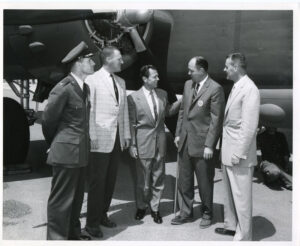
5 Doolittle Raiders approving the B-25D backwards modification to a C model at the North American Aviation facility in Inglewood, CA, April 1958
The time had come for Scholl and Davis to form a corporation. They called it Historic Aircraft Preservation Group (HAP Group), and B-25 parts began appearing in Scholl’s transmission shop. In 1977 Tony Ritzman happened by, while Scholl was working on a B-25 rudder assembly. Ritzman and Scholl had known each other for a couple of years as Tony, who has an engineering degree, was also in the high-performance racing transmission business. Once he saw what was going on, Ritzman promptly bought 20% into the B-25 thus becoming a partner.
Scholl, Davis, and Ritzman were now slowly drawn into pioneering a growing movement of WWII aircraft which would be known as “Warbirds.” Scholl and Davis coined the name Aero Trader, for the exchange and sales of warbird parts, using the Hardwick inventory as a starting point, the name stuck for the new company.
1978 was a pivotal year for the new organization. After seizing another opportunity, Scholl and Ritzman bought B-25J N7674 an ex-RCAF Mitchell (parked at the Troutdale, Oregon airport) from long-time military parts supplier, Bob Sturges. Scholl drove a replacement engine to Troutdale, Oregon and got the bomber ferried back to Van Nuys Airport, which was close to home where they could work on the aircraft. At this time Tony began taking flying lessons at VNA followed by becoming a full vested partner with Aero Trader.
Aircraft parts spread out across several backyards and numerous storage lots in the West Valley suburban Los Angeles, this began to present a problem. When Los Angeles County disapproved the piles of aircraft parts in suburban neighborhoods, they were forced to find a new home. Scholl knew of some land in the desert near Imperial Valley, California and it was purchased as the new Aero Trader home base. Carl plowed a 3,200-foot dirt airstrip adjacent to the facility, which they still use today.
Both Carl and Tony relocated their families, airplanes, parts, and moved the transmission shop to put bread and butter and put hot dogs on the table, with an occasional can of beans! All the parts were moved by truck and N3155G was flown into the freshly made dirt strip. Carl’s attention had gradually turned away from his transmission business. Tony Ritzman also left his job in the auto racing industry and the two men concentrated full time on the task of restoring aircraft.
Needing capital, N7674 was sold shortly thereafter. More extensive restorative work continued on N3155G, which was eventually sold to Don Davis in Casper, Wyoming. This beginning attracted opportunity to do mechanical work including storage, aircraft paint, and maintenance for other B-25s.
In 1979 Davis and Scholl finally went back to South Omaha Airport (with the Hardwick inventory in hand) to make a list of hundreds of parts we needed for the B-25 to ferry it back California. It needed almost everything: Engines, all wiring, control cables were mostly gone, instruments, control surfaces, tires, brakes, plexiglass, hoses and you name it. It was a striped hulk, with hatchet gouges, trash, beer cans and you name it in the fuel tanks.
In late September or first of October Tony and Joe hauled a tractor trailer full of parts to Omaha. Tony inspected and cleaned up two R-2600’s out of stuff they had purchased from Hemet Valley Flying Service and put them on engine mounts. So, we had two QECs ready to mount. And we had that beast running and landing gear retracting in a couple of weeks after we arrived, a tribute to Tony, Carl and Joe’s talent and ingenuity.
During this time ABC TV show PM / Evening magazine caught interest in the impossible story of the local derelict WWII B-25 airport icon, after sitting for years, was going to fly out of South Omaha Airport. A local citizen, Mr. Ed Kitta, had visited the airport several times to observe their progress. Unknown to the Aero Trader team, Ed Kitty was interviewed by the PM Show. Come to find out after they departed, he was a WWII Veteran B-25 pilot, who had trained at Eagle Field!
Davis said “we were hampered by cold mid-western weather with blowing cold. We worked late into evenings, but after a LOT of mechanical issues that took days to work out, in front of news cameras and a huge crowd, in mid-November, veteran air tanker pilot Bill Muszala showed up to ferry the B-25.
Take off time was set for 0630 but problems ensued causing delay. They finally got the engines running and took off in the early afternoon flying to a nearby airport with a paved runway and hangar, ideal for further repairs and final adjustments in prep for the long flight back to California.
The next morning, they took off with just a few key instruments in the instrument panel and the rest with holes that you could see through to the bulkhead. It was a freezing cold, wild adventure. When confronted by a weather front and big snowstorm, this caused them to make an emergency landing in Broomfield, Colorado for an unplanned overnight stay. Next day was beautiful flight over snowy Rockies making a fuel stop at Grand Canyon Airport and onward to the Aero Trader facility.
In 1980 Joe Davis purchased Eagle Field, a WWII Air Training Field in Central California near Dos Palos. He purchased it on a sealed bid from the FAA. Back in its heyday it was considered the “country club” of WWII primary flight training bases in the US. Opened in 1942, it trained close to 5000 pilots. It had a swimming pool, movie theater, bowling alley and an athletic field in sunny California. Since 1985 Eagle Field has hosted an authentic 1940’s style dinner dance and warbird fly-in every June (see the June 2019 party details at www.eaglefield.net.
Several months after Joe purchased Eagle Field, Joe mentioned to Mike Pupich, that there was a 16-acre parcel adjoining Eagle Field that he could buy from a private party and Mike joined the team, now bombers and bases!
N9856C Pacific Princess, was brought to Aero Trader in 1980, owned by Ted Itano, and came under caretaker status at Aero Trader. This arrangement eventually worked out for them to have operating privileges and by 1982, both Scholl and Ritzman were both type-rated in the B-25 and moved to the pilot’s seats full time.
A long succession of B-25s began to enjoy the attention of Aero Trader desert facility. In 1983, the company bought N3438G, a neglected Mitchell located at Turlock, California, and ferried it to Aero Trader for rebuild. It was sold the following year to Wily Sanders in Troy, Alabama. Additionally, Aero Trader purchased a number of derelict or near-derelict airframes over the next several years.
Two B-25s came from the H.R. Coffield estate sale in Rockdale, Texas and were trucked Aero Trader desert facility, as was N3680G, which was recovered from Vega, Texas. Two other airframes recovered include the only known B-25B fuselage in existence (40-2347, and never civil-registered) rescued by Ed Maloney in the 1966.
Another rare aircraft acquired was a B-25C (42-32354, also never civil registered). It also had been used as a movie prop, showing up in the classic Twilight Zone TV episode as “King Nine” (included in the Hardwick deal). Also added, were a pair of B-25 airframes, N943 and N9936Z, (purchased from Hal Kading) saved from destruction in Fairbanks, Alaska. Other incomplete airframes and parts were acquired as well from around the country.
Aero Trader also purchased several substantial parts inventories, including portions of the TallMantz Museum, Pioneer Aero, MDA Rochester NY, Chesapeake Airways, John Marshall and Harry Doan surplus RCAF parts, and the entire engine inventory from Hemet Valley Flying Service of R2600 used on TMB and Super Cat engines (same as B-25). These collections were added to what they obtained from Hardwick. By 1984, Aero Trader had amassed an enviable assemblage of B-25s and parts from which they could fuel their business.
In 1985, the partners decided to move their day-to-day operations back to Chino to become more customer accessible. A hanger, offices, and small storage area were obtained. Much of the collection of parts and airframes remained at their desert facility, but ongoing restoration projects were moved to the new Chino Airport facility, an airport with a paved runway, and in the mix of a large growing Warbird population.
Needless to say, since the early 1980s, Aero Trader has been the anchor for the B-25 community in the Warbird world. In 1986, Scholl and Ritzman bought out Joe Davis, who went on to develop the Eagle Field complex at Dos Palos, California.
Aside from their restoration efforts, both Scholl and Ritzman have flown B-25s on a number of film projects requiring the versatility of the B-25 as a camera platform with Carl joining a flight crew that flew N3156G from Oakland to Tahiti to film a Circle-Vision project for the Disney Studios Tony joined John Crocker in flying Steven Grey’s B-25D, N88972, across the Atlantic for delivery to The Fighter Collection at Duxford, England, and was one of the pilots who flew the ex-Tallmantz B-25 camera ship (N1042B) to film Memphis Belle out of England.
Perhaps the most rewarding projects have been their involvement in US Navy aircraft carrier launches commemorating the historic 1992 Doolittle Tokyo Raid launch off the USS Ranger CV-61, conceived and produced by Bradley Grose and Joe Davis. Aero Trader put together the carrier flight operational plan for the Pentagon approval for the US Navy and B-25 Pacific Princess lead the formation flight of 8 B-25’s for the 50thAnniversary of the Doolittle Tokyo Raid up the coast where they made low approaches, dropping red, white and blue carnations in the surf at Pebble Beach, with the old General Jimmy Doolittle and his son, John P. Doolittle observing. They also flew off the deck of the USS Carl Vinson twice in 1995. In 2000, Tony and Carl added the USS Lexington and the USS Constellation to their logbook entries of Navy flattops for the movie Pearl Harbor.
But Aero Trader’s specialty remains the reconstruction of tired B-25s (and other warbirds) into pristine examples of the types. The company continues to maintain the largest inventory of B-25 airframes and parts in the world, including 6 B-25 future projects to offer, waiting to be restored (for those interested please inquire).
Carl notes, “The trend today, in restorations, is towards authenticity and originality. Some parts, such as armament, turrets, radios and armor plate have long since been removed and scrapped in civilian use. Many of these items are hard to find or have to be manufactured from scratch. This obviously adds to the cost of a restoration. There are owners willing to pay the premium price for a well-turned-out B-25, or other warbird, with overhauled-to-new systems and an authentically restored interior and exterior”
What makes Aero Trader a world class operation is the unusual grouping of services they provide in one facility. From ground up restoration, engineering spars, sheet metal, hydraulic and wiring harnesses, and part manufacturing, they also have an engine rebuilding shop overhauling Wright 2600 engines, and R1820 engines for B-17’s. Critical to aircraft restoration is plexiglass especially on the B-25, where Aero Trader has a full plexiglass shop and molds for every WWII turret type and almost every warbird, fighter canopies, trainer, and bomber aircraft, including the manufacturing of.50 Caliber machine gun replicas for all Warbird aircraft.
What started as a hobby, is living proof that success comes in many forms, and through a handful of friends. With Carl as President of Aero Trader, he handles customer relations and parts sales and is the American Warbird Picker, Tony is CFO, concentrating on flight operations, FAA type ratings, and the inspection authorization side of the business. Operating out of 4 ten thousand square foot hangars located at Chino Airport, 50 miles East of Los Angeles, they have a workforce of craftsmen and several restoration projects in process. Aero Trader ranks as one of the largest Warbird restoration facilities in the worldwide and one of the few that can accomplish work on larger aircraft.
In addition to restoration, Aero Trader owns the B-25 type certificate (transferred from Shell Oil) being an invaluable milestone to note allowing them to do things such as issue airworthiness directives. This really important to the sustainability of an aircraft type. When critical defects are discovered, as the landing gear drag link breakage issues, it allows them to issue an AD or service bulletins that require aircraft operators to inspect and correct these defects in order to remain airworthy. This drag link issue was discovered when the B-25J Panchito had a landing gear failure. After inspection it was discovered as an issue with other B-25s that fortunately had not had a failure yet and was corrected prior to an incident.
What once were boyhood dreams, after 40+ years, Carl and Tony are the premiere B-25 Mitchell restoration experts worldwide and the Carl Scholl, Tony Ritzman and Joe Davis friendship is still going strong. When you look back today, there is an entire fleet of flying B-25 bomber aircraft up in the air and operational, and industry built upon their early beginnings, to preserve Americas WWII aviation history.
Why do they do this you may ask is a very simple answer. Carl states “for the utmost respect of veterans and their sacrifices to preserve our freedoms, where flying the B-25 becomes a living tribute them and their bravery.”
“My life was no grand design; it has all been by circumstances and God’s help. It’s a good thing it happened however, because we have been able to preserve a lot of history over the years that would have gone to the scrap yards and disappeared into the wind” said Carl.
Carl Scholl has a BA in industrial arts, has a commercial pilot, single and multi-engine land ratings; with type ratings in: B-25, B-26, M-202 and 204.
Tony Ritzman has a BS in electrical engineering, has commercial pilot, single and multi-engine land ratings; instrument airplane; flight instructor with type ratings in: B-25, B-26, S-2, M-202, and 404; Experimental Authorizations in: N-170, F-7F, FB-11, B-26, P-51, T-28. Tony is an IA and A&P mechanic.
Aero Trader Worldwide Restoration Accomplishments:
Inducted into the EAA Warbirds of America HALL OF FAME 2021
Carl Scholl (EAA 184061) and Tony Ritzman (EAA 393289)
E
AA Oshkosh GOLD WRENCH Awards:
1995 North American B-25 J – Cavanaugh Flight Museum: “How Boot That” N7687C, AAF Ser# 44-28925. 2002 North American B-25J – Kermit Weeks: “Apache Princess” N1943J, AAF Ser# 43-28059. 2017 Douglas A-20J Havoc, Rod Lewis: N747HS, AAF Ser# 43-21709
EAA Oshkosh SILVER WRENCH Awards:
1987 Chance Vought F4U-5 Corsair – Glen Hyde: N100CV, Navy BuNo# 1244471991 North American T-28C – Al Grant: N140AG, Navy BuNo# 1405111999 North American B-25J – C & P Aviation “Betty’s Dream” N5672V, AAF Ser# 45-88352012 North American B-25J – Liberty Aviation Museum “Georgie’s Gal” N345BG, AAF Ser# 44-86777
Resources:
Air Classics / Warbirds International / Microfilm Doolittle Raid Collection / Stimson Diaries / Butcher Diary Book 3 / General Merian Cooper Interview / L/Gen. Doolittle interview August 1970 / USAF Records

